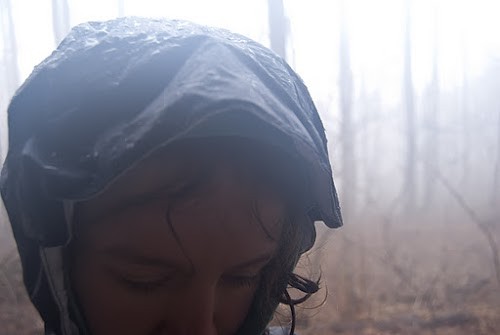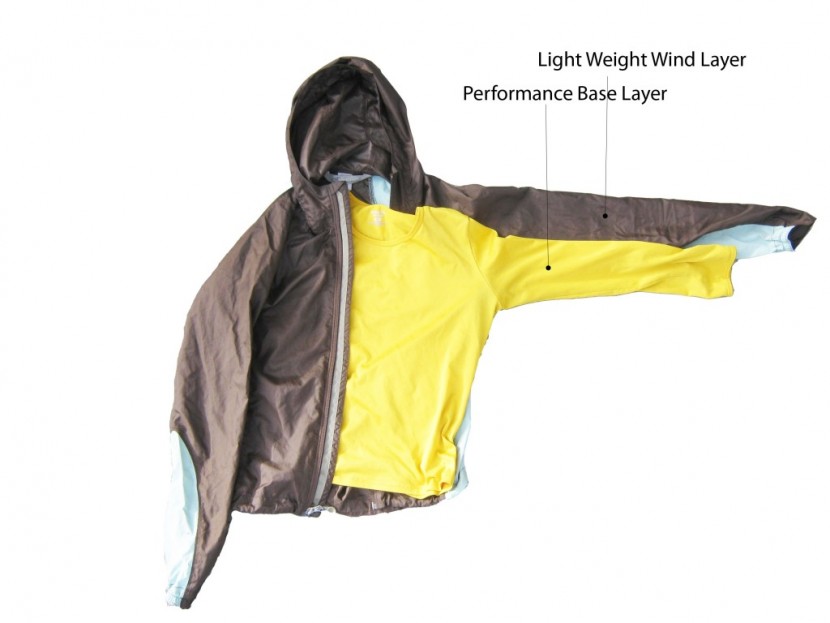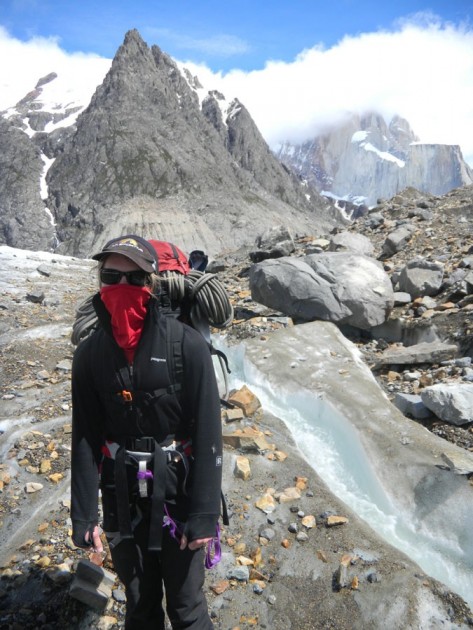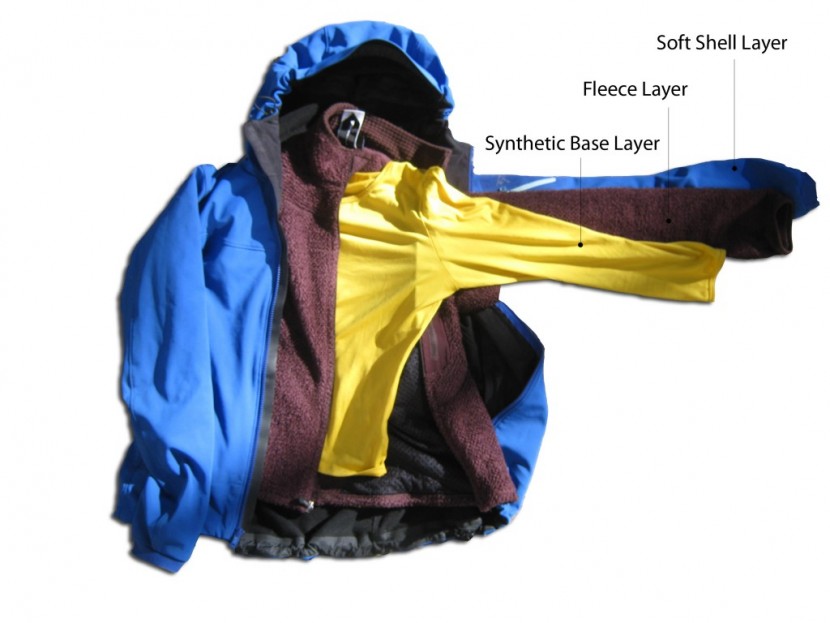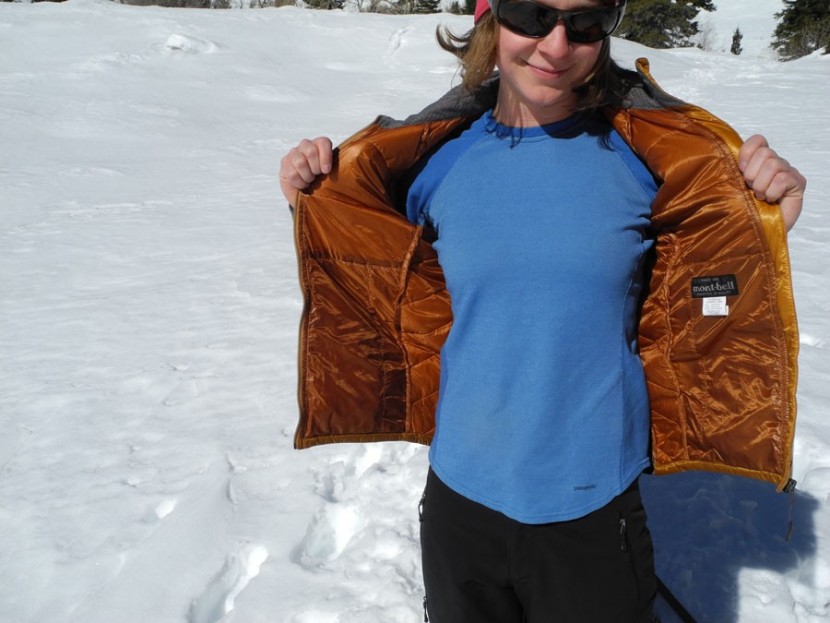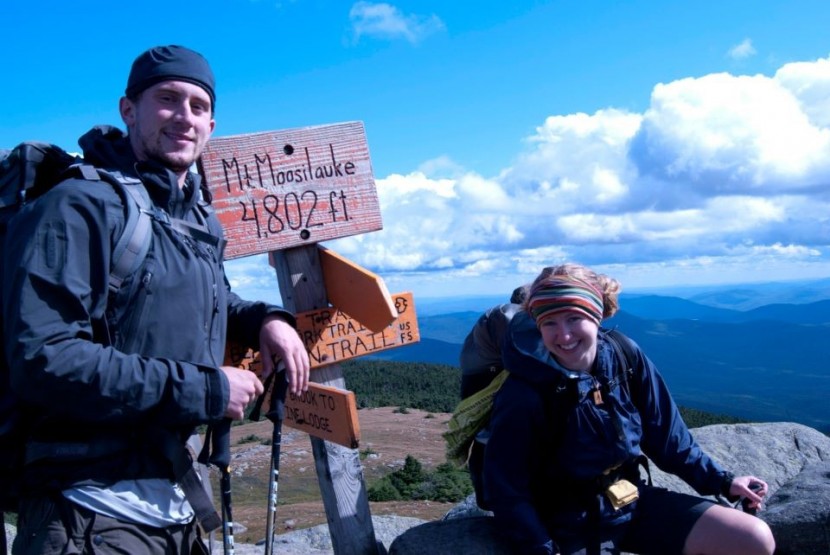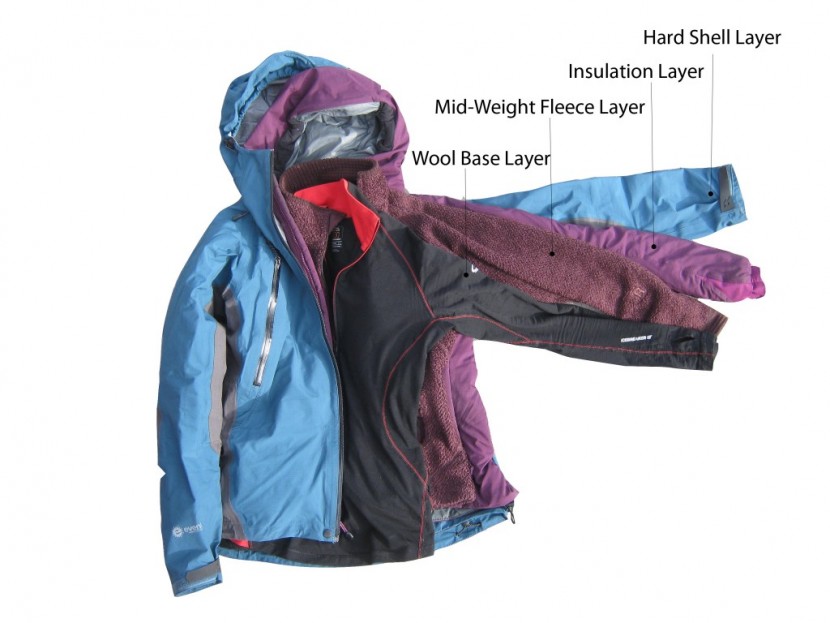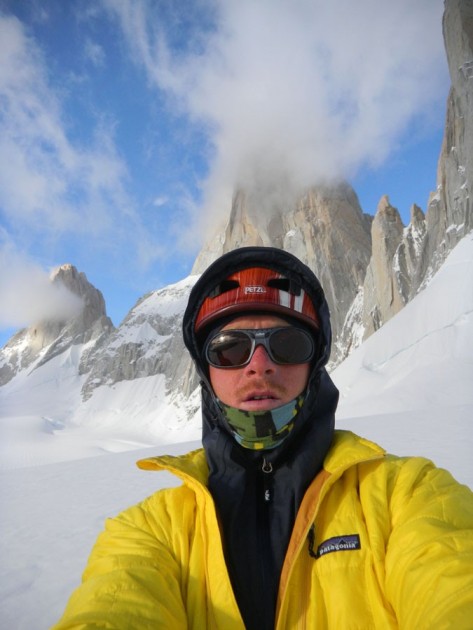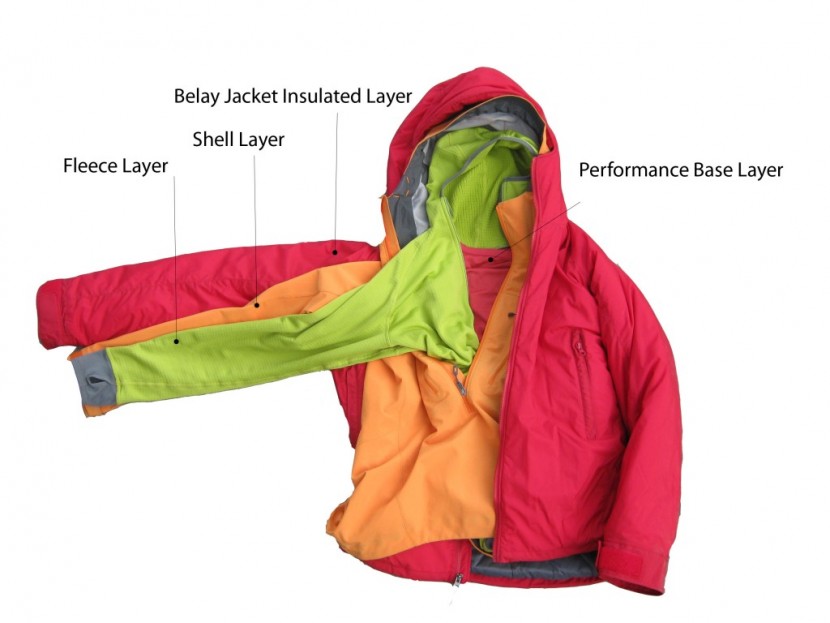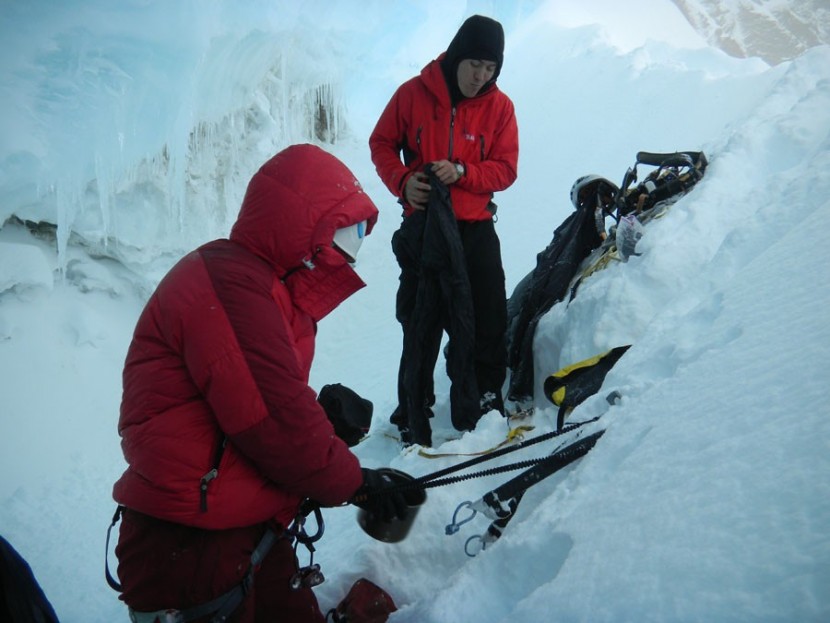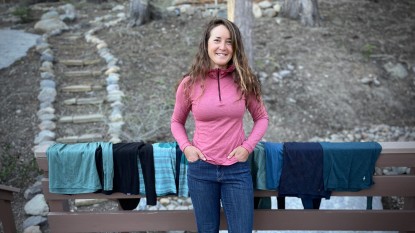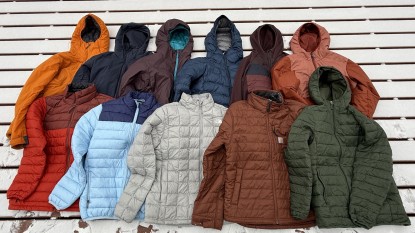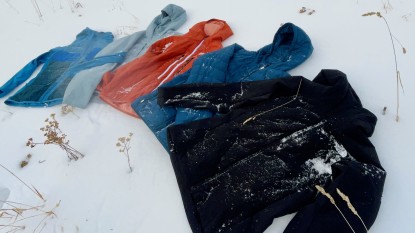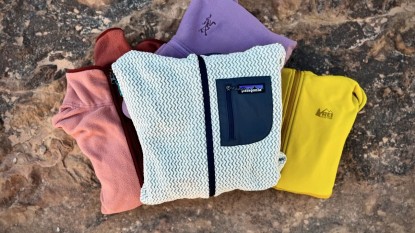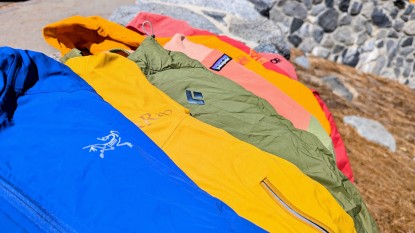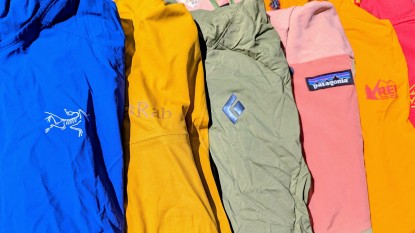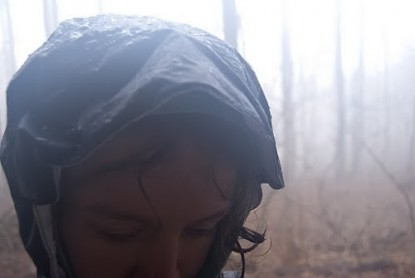In the last part of our three-part series on layering clothing we explain how to layer for winter and different outdoor conditions. We provide details and examples on common layer combinations for different types of activities. These systems reflect our bias to travel fast and light while staying prepared and safe in changing conditions.
Layering Systems
Here's an overview of the three articles in this series:
- How to Layer Clothing to Keep Warm - How modern technical clothing is designed to work as a layered system. We explain each layer from base to outer shell.
- Why You Get Cold in the Mountains - How and why you lose (and gain) heat during outdoor activities? How can a layered system help?
- How to Layer Clothing for Winter and All Seasons (current article) - Recommended layered clothing combinations for practical situations ranging from all-day hikes to extreme mountaineering.
Summer Half-Day-Activities
(Two-Layer System)For a half-day hike in the summer, or a short multi-pitch rock climb, we prefer a two-layer system. Since it's warm, and you're never too far from civilization, there is no need to overdo it with insulated layers. But keep in mind that if it gets windy or stormy, you will need some protection until you can retreat or find cover.
- Base — Start with a performance shirt or long underwear base layer. It could be long-sleeved or short-sleeved depending on the amount of sun exposure you expect and how hot the temps are, and you could select either wool or synthetic materials. That said, you'll see us heading out in a long-sleeved, zip-necked wool shirt as a base layer.
- Outer — For your second layer, if you are concerned about space and weight, choose a lightweight, compressible wind jacket such as the Patagonia Houdini. Or choose a windproof fleece such as the Arc'teryx Fortrez Hoody. Lastly, if there is a chance you might see some moisture throughout the day, a windproof soft shell like the Outdoor Research Ferrosi Hooded that is also mostly water resistant will do the trick.
Summer Full-Day Activities
(Three-layer system)A full-day in the mountains can bring surprises. Afternoon thunderstorms are common in many mountain areas, especially in July-Sept, and can arrive with little warning. Being caught in the backcountry in such a storm, and facing a hike out without adequate protection, is not just uncomfortable, it can be dangerous. Whether it's a day hike, or a serious alpine rock climb, we're going to tuck a bit more in our rucksack just in case something goes wrong. While your “three-hour tour” may go better than the one in Gilligan's Island, we advocate being prepared for the combination of a twisted ankle and an unexpected storm in the back country.
- Base — For the same reasons as our half-day hike system, start with a wicking performance shirt of your choosing. We'll choose a light merino wool long-sleeve base layer with a zip neck.
- Mid — For your mid-layer, add warmth with a mid-weight fleece such as the Patagonia R2 Jacket. If the temperatures are cooler, such as Spring or Fall, we'll swap out the fleece for the hoody version of a light insulated jacket such as the Patagonia Nano-Air Hoody.
- Outer — Top it off with a shell that is appropriate for the conditions. If you plan on doing more aerobic activity in good weather, a water-resistant soft shell and/or ultralight rain jacket will do the trick. If there is a chance of significant rain (and there almost always is in the mountains), toss a hardshell or light rain jacket in your pack along with some rain pants.
Keep in mind that a day hike or climb gone wrong may mean bivouacking overnight. In addition to the above, we'll bring a warm hat, a headlamp, a whistle, athletic tape (in case of a twisted ankle), extra food, and water.
Multi-Day Backpack Layers
(Three-layer system)There's frankly not a huge difference between our Full-Day layer system and what we bring on a multi-day backpack trip. Mostly, we'll just assume that bad weather will occur, and the time to get out if things go wrong will be longer. In short, we're a bit more conservative.
- Base — We'll choose a light merino wool long-sleeve base layer with a zip neck. But, we might toss in a light short sleeved performance shirt as a luxury.
- Mid — We'll forgo the fleece for the hooded version of light insulated jacket such as the Patagonia Down Sweater. While a fleece jacket is comfy, a light insulated jacket is more robust, and will keep you warmer in a broader range of circumstances.
- Outer Shell — Top it off with a shell that is appropriate for the conditions. For a multi-day backpack we'll assume significant rain and bring a hardshell or quality rain jacket along with some rain pants.
In addition to the above, we'll bring a warm hat, a headlamp (and extra batteries), a whistle, athletic tape (in case of a twisted ankle), along with our usual assortment of backpacking gear.
Winter Wanderings
(Four-Layer System)For even colder and wetter activities, such as skiing, snowboarding, ice climbing, or moderate mountaineering, 4 layers work best to allow you to cool off during the hard aerobic parts of your day and stay warm during the slow or stormy periods. Layers can be removed and added as needed throughout the day.
- Base — Start with a long underwear layer, shirt and bottoms. Thinner usually works best so that you don't overheat while charging uphill. As always, we'll choose a light merino wool long-sleeve base layer with a zip neck.
- Mid — Select a fleece that you like best. It should be light to mid-weight such as the Patagonia R1 and R2, or the Arc'teryx Caliber Hoody. It can be thinner than the fleece you would choose for a three-piece layering system, because in this system you will also have an insulated layer.
- Insulating — For an insulated layer, pick something relatively lightweight, and it can be either down or synthetic insulation. It should be able to fit over your fleece and under your shell layer. While we prefer a light down sweater-style jacket with a hood, in winter conditions where your jacket may get wet, a synthetic insulated jacket is wise. Synthetics weigh a bit more and are bulkier than down alternatives, but they retain their insulating properties when wet. If we're in the back country on a multi-day ski trip, the additional weight and bulk of synthetic is well worth it. Our favorite insulating layer jackets for winter include the Arc'Teryx Atom SV and Mountain Hardwear Zonal.
- Outer Shell — A protective hard shell layer is where it's at. If you are playing in snow, whether it is shredding, back country skiing, or snowshoeing, you are bound to get wet, which is something you don't want. A Gore-Tex or EVent jacket such as the RAB Latok Alpine jacket will keep you dry while still providing some level of breathability.
Also, a warm hat that completely covers your ears, a balaclava and a neck gaiter (buff) are recommended.
Extreme Expeditions
(Four-Layer System)The expedition layering system is very similar to the winter four-layer system, except that the layers should be thicker and more protective. In very extreme high altitude expeditions a full body down suit is common, but used only above 24,000 feet. Keep in mind not to wear too many layers at once. If too hot, remove layers to regulate your temperature and reduce sweat, which will only make you colder when you stop.
- Base — Start with a long underwear layer, both shirt and bottoms. Even on high altitude expeditions, a thinner base layer shirt usually works best so that you don't overheat while approaching, but a thicker bottom layer is preferred. A one-piece suit such as the Mountain Hardwear Power stretch suit or Outdoor Research Saturn suit is frequently used in high-altitude expeditions as an alternative to a bottom layer and serves to augment the top layer with additional insulation for the core.
- Mid — A typical expedition system will rely on a mid-weight fleece layer such as the Patagonia R2 and R3, or the Mountain HardWear Monkey Man. Some mountaineers prefer to use an insulated down or synthetic sweater, or vest, in addition to a mid-weight fleece.
- Insulating — For an insulated layer, a very warm high-quality jacket with a hood is essential. Down is preferred, but it can be either down or synthetic insulation. It should have a water resistant outer material such as Gore-tex and baffled construction. Many high altitude mountaineers will opt for a high-loft down jacket with premium 800-fill (or 850) goose down that incorporates a breathable, water-resistant shell such as the Mountain Hardwear Sub-Zero, or Absolute Zero parka. In any case, your insulating layer should be sized to over your mid-weight fleece layer and under your shell layer.
- Outer Shell — Some high altitude mountaineers will forgo the traditional hard shell, for an insulating down jacket that incorporates a technical Gore-tex shell material, and then switch to a down suit for the camps above 24,000 ft. In general, a waterproof, breathable shell with full front zipper, underarm zips, and no insulation is used to protect against wind and rain. At lower altitudes, the hard shell may be used instead of an insulating layer when establishing camps or humping loads between camps. Also, hard shell pants or climbing bib with full-length zippers are typical.
For the head, a warm hat that fully covers your ears, a neck gaiter (buff), thick balaclava, thin balaclava, and face mask are typical.
If you haven't read them already, don't miss the first two parts of this article: Introduction to Layered Clothing Systems and Why You Get Cold in the Mountains.

